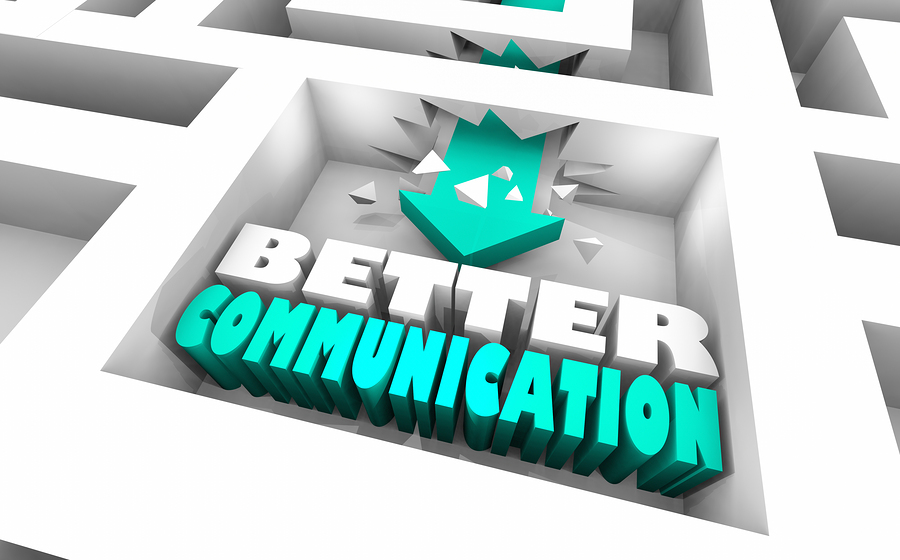FACTOID: Adult education does NOT exist on a bell curve, nor does healthcare competency. The teachers of your past were happy to place your efforts on a bell curve, and blame the lack of learning on the student. In healthcare, competency is excellence, and there are no lesser positions for the learner. Client and our patients will not benefit from a “C Average” provider. A few basic facts need to be shared to start this discussion:
- Adults learn only when they are ready to learn (the ‘Teachable Moment’)
- Adults learn best in one-on–one situations (tailored development)
- Adults learn in 20 minute windows – if longer, their mind drifts.
- Adults need to review the key points at least seven times in the 21 days following the “education points” to retain the concepts.
- Baby boomers learned for loyalty, Millennials learn for self-development.
The educators in your past were concerned that you learned the material; you remember your educators with a fond feeling, while teachers were a dime-a-dozen, and easily forgotten. In healthcare, leaders ensure learning occurs with meaningful application phases, measured against known standards of competency. Many managers are happy ‘teaching’ and ‘grading staff’ on some arbitrary 1-10 scale; contemporary leaders want to develop people through work, and strive for developing competency that drives a trust in the learner. So let’s look at the learners more closely.
PECULIARITIES OF ADULT LEARNING
The veterinary practice staff is most often a very diverse group of highly committed people. They were trained in a school system that had a bell curve mentality, and many settled for being in the major part of the bell curve.
In veterinary medicine, or any healthcare profession, we do not have that luxury, it is a “go” or “no go” world of curative medicine. Either you have the I.V. in the vein, or you do not. Either you have re-established an airway in an anesthetic misadventure, or you bury your patient. Either you have stopped the bright red blood from spurting across the room, or your trauma case will exsanguinate and you can bury your mistake. There is no such thing as a partial pregnancy – it is all or nothing!
The Millennial/GenZ practice staff will not make it any easier on the trainer:
They say: They Respond:
I’m an individual! We want teams.
Don’t hassle me! Challenge us.
Give me direction! Leave us alone.
Tell me the information! Let us try it.
Learning’s cool! Learning is boring.
Don’t give me history! Tell us why.
Make it quick! Make it fun.
Many adults fear learning environments because of past experiences:
- Bad memories
- Lack of confidence
- Fear of comparisons
- Social Unease
- Suspicion
“They” are not out to get you, “they” are usually just individuals who have never had the opportunity for competency-based learning; but then again, most trainers in veterinary practice have never learned how to be effective educators. That is the thesis of this presentation, understanding who are the learners, and how they learn best.
“What we learn with pleasure we never forget.
EMOTION & GENDER
(generalities – not guarantees)\
Men Tend To: Women Tend To:
Hide emotions Display emotions
Seem unaware Relate to others
Miss emotional cues Read others well
Ignore social approval Seek approval
Answer the question Want a discussion
Forget and move on Carry a vendetta
The adult educators have determined there are four basic learning preferences in the current American/Australian/New Zealand population (at least they have classified four types for this general discussion):
TALKERS (emote/relate) – learns best through sharing, relating, discussing, they seek attention, like working in groups, and enjoy role playing.
THINKERS (reflect/relate) – learns best through logic and fact gathering, want to hear from experts, want the science shared, explore the principles, analyze ideas, theorize, read, desires the one-on-one time
TESTERS (react/reflect) – learns through testing & objective assessment of examples, they are problem solvers, seek results, enjoy experimenting and tinkering,
TRYERS (react/emote) – learns through impulsive trial & error, it must make sense, action-oriented, decide & apply, connecting ideas, need to stay productively active.
Significant learning combines the logical and the intuitive, the intellect
and the feelings, the concept and the experience, the idea and the meaning!
|
The trainers in a practice should be subject-matter experts, and no one can be a trainer of everything; people are intelligent at different things. Learners who start with their own interest areas seem to learn more effectively. The Training Coordinator of a practice knows who is the best trainer for which subject, ensures they are recognized in public as the trainer for that subject, and schedules topics into the training plan to support the practice initiatives and mission focus. This is explained in detail in the VCI Signature Series monograph, Staff Orientation & Training, which has zone-specific four phase development programs and the electronic Tool Kit (available from VIN Bookstore, www.vin.com).
The hiring team (discussed at length in the Building The Successful Veterinary Practice: Innovations & Creativity (Volume 3), published by Blackwell/Wiley & Sons) becomes the training mentors and mentors ensure the trainers are causing the appropriate learning to be occurring with the candidate(s) or staff members. As a practice trainer is developing their “effective teaching” lesson plan, they need to think about the learner(s) as well as the subject matter. They must remember the five factors of Adult Learning discussed earlier in this article, and ensure the subject matter is broken down into easy-to-digest segments. All too often, the trainer tries to put too much into too long a training period, and most adult learners phase out after about 17 minutes time; there must be a change of pace, and/or practical application, to mark each segment for EFFECTIVE TEACHING to be evaluated.
When doing one-on-one, it is best if the trainer meets the learners preferred learning style, but in groups, trainers must use multiple methods to balance their approach to a diverse group of learners. The following matrix allows the trainer to address the different styles of delivery to balance their presentation(s):
TRAINERS “LESSON PLAN” MATRIX
| Method | wt | Step 1 | Step 2 | Step 3 | Step 4 | Step 5 | Step 6 | Step 7 | Step 8 | Step 9 | Step 10 |
| experiment | 10 | ||||||||||
| paired demo | 9 | ||||||||||
| individual assessment | 8 | ||||||||||
| small group discussion | 7 | ||||||||||
| role play | 6 | ||||||||||
| case study | 5 | ||||||||||
| large group discussion | 4 | ||||||||||
| video presentation | 3 | ||||||||||
| interactive seminar | 2 | ||||||||||
| lecture | 1 | ||||||||||
| Timeline | <30 sec | ||||||||||
| Learning Objectives (outcomes): | |||||||||||
The effective teaching sequence is: Capture Attention (discovery), set up the need, determine competency, ensure teaching/learning, targeted application, evaluation by L.O.s
LEADERSHIP SKILLS FOR TRAINERS
PLANNING – The core of a successful practice is effective planning. As the leader, you must do it with them when no one else can, but please, don’t do it for the team for very long. As soon as possible, train your team to do the planning. When the staff assumes the responsibility for the planning process, they also assume the operational activities of daily practice. When the team is doing its job, healthcare delivery becomes fun again.
“Done by the staff members, for their programs.”
REMEMBER ALWAYS, THE ROOTS OF PLANNING INCLUDE:
- Patient Advocacy
- Client-centered Service
- Practice Philosophy and Core Values
- Mission Focus & Standards of Care
- Continuous Quality Improvement (CQI)
- The Power of The Entire Healthcare Delivery Team
Planning allows more than one plan to be written for achieving a similar outcome, so the team hitting operational road blocks and speed bumps always has alternatives which can be tried without going back to the boss with a failure.
The bottom line of planning is actually exciting for most teams. It has been shown time after time, for every fifteen minutes of dedicated planning, the user usually gains at least an hour back during the implementation process.
EFFECTIVE TEACHING – every practice needs in-service training, but no one has been taught how to be a trainer. Just because you have been through some school, it does not mean you understand adult education. Adults only learn when they are ready, and we call those rare points in time “teachable moments.” In the real world, we must often construct “discovery” events (or be ready to grab a naturally occurring one) to initiate educational moments.
Effective teaching is more than talking at people. Don’t assume the staff has learned something just because you’ve written a protocol manual or taught it once. The proof lies in what they can do.
The trick is to put them into a position where they see the need for the skill or knowledge you wish them to learn, then offer the help they need to learn it. After they think they have learned the skill, let them try it by themselves, but monitored by someone who knows what the predetermined standards are for the practice:
Replication is learning, improvement reflects knowledge application(s).
Learning Objectives (3 to 5)
- Learning Objectives are for the trainer, not the participants; they are usually outcome/action oriented, and kept to only 3 to 5 elements for any session. If the learner replicates the learning objectives (without being told) after teaching learning, then effective teaching has occurred.
- Discoveries are opportunities (artificial or actual) to have the team ask to know more, often called “teachable moments”. Mini-discoveries should recur continuously during teaching/learning with the facilitated discussion method of sharing knowledge.
- Teaching/Learning means competency of performance is the application expectation. When a team member does not adequately learn, it is the trainers concern to find an alternative teaching method which will work better.
- Application is the demonstration of the competency – the train to trust level of practice performance.
- Evaluation is based on the outcomes set in the learning objectives, and have not changed during teaching/learning or application. Recycling means the trainer did not get the concept/skill across in an adequate manner for replication.
Evaluating is more than keeping a score card; everyone assesses events both during and after they happen. For the evaluation process to work, you must have a goal for each activity; a set of expectations that everyone can understand is the measuring standard BEFORE the event occurs. The practice philosophy, its core values, and the mission statement are the guidelines that should form the evaluation expectations.
EVALUATION is a basic leadership skill in itself, although in the other two basic group skills, we just skimmed the surface. This is because the decision was made to use the term “evaluation” and allow the misperceptions to remain . . . then we would ask the reader to learn about a complete evaluation process. After grasping “the balance” between group and individual needs required for appropriate evaluation in team-based healthcare delivery, we ask you, the reader, to go back and read up on basic leadership skills, assess what you read, assumed, and surmised, then recalibrate your concepts to the new definition.
The above is a mini-course in applied leadership skills. I have been teaching leadership for over three decades, and learn something new with every practice team that I encounter on consults. The challenge is then to translate that into practice owner understanding and acceptance. In consulting it is not done over-night, it is a step-by-baby step process, with a monthly Action Plan, that evolves the practice paradigms over a period of months. In the process, a few parameters must be established:
VISION
MISSION
CORE VALUES
WRITTEN STANDARDS OF CARE (Risk Level 1)
AN INTEGRATED TRAINING PLAN (we use a 4 phase system)
A MONTH-BY-MONTH STAFF DEVELOPMENT PLAN
ABILITY TO TRACK SPECIFIC PROCEDURES (monthly)
COMPABLE FISCAL FACTORS (monthly)
You do not have to do it alone – on-site consultations are available from VCI.






